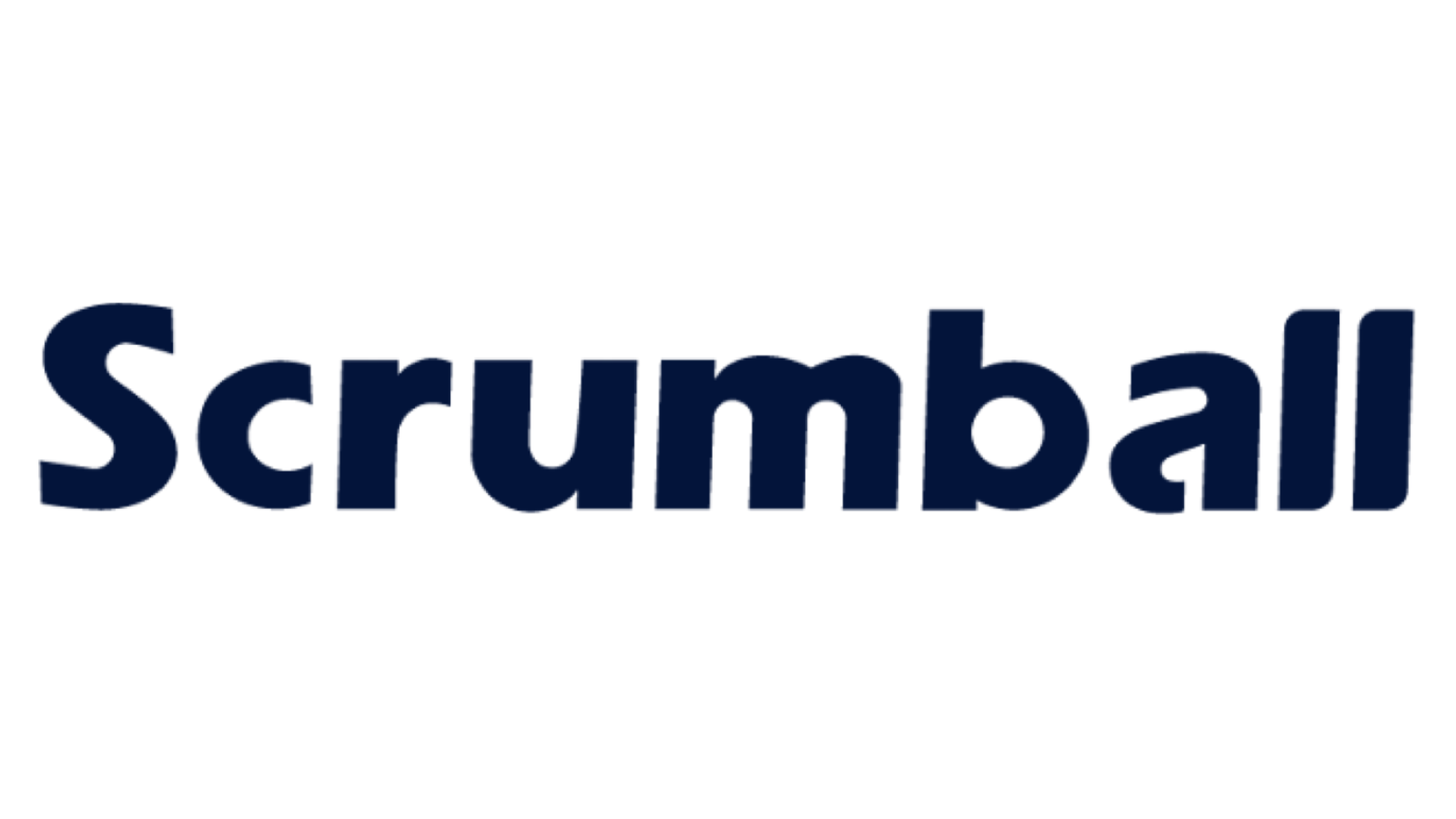How to Implement Marketing Automation for Business Success

Imagine having more time to focus on big-picture ideas while your marketing runs smoothly in the background. That’s the power of marketing automation. It streamlines repetitive tasks, like email campaigns and lead nurturing, saving you time and boosting efficiency. Businesses using effective marketing automation report a 14.5% increase in sales productivity and a 12.2% drop in marketing overhead. With a solid marketing automation strategy, you can deliver personalized experiences at scale, driving revenue and building stronger customer relationships. Stay updated with the latest marketing automation news to ensure you’re leveraging the best practices in the industry. Ready to transform your marketing strategy? It all starts with successful marketing automation.
What Is Marketing Automation and Why Does It Matter?
Definition and Key Components
Marketing automation is a game-changer for businesses. It helps you connect with your audience through automated messages across multiple channels, creating meaningful customer journeys without constant manual effort. At its core, marketing automation includes several key components:
- Data Collection: Gather insights about your audience to understand their preferences.
- Customer Segmentation: Group your audience based on shared characteristics for targeted messaging.
- Campaign Design: Plan and execute marketing campaigns tailored to your goals.
- Multi-Channel Automation: Deliver messages across platforms like email, social media, and SMS.
- Lead Scoring: Prioritize leads based on their likelihood to convert.
- Personalized Content Delivery: Send relevant content to the right people at the right time.
- Analysis and Optimization: Continuously improve your strategies using performance data.
With the right marketing automation tools, you can streamline processes and focus on building stronger customer relationships.
Tools and Software Used in Marketing Automation
Marketing automation software powers this entire process. Popular platforms like HubSpot, Marketo, and ActiveCampaign offer features for email marketing automation, lead nurturing, and more. These tools simplify complex tasks, making it easier for you to manage marketing campaigns efficiently.
Common Tasks Automated
Automation takes care of repetitive tasks that would otherwise consume your time. For example:
- Sending personalized email sequences.
- Following up with leads based on their behavior.
- Scheduling social media posts.
- Tracking and scoring leads to identify sales opportunities.
By automating these tasks, you can focus on crafting a successful marketing automation strategy that drives results.
Benefits of Marketing Automation
Increased Efficiency and Productivity
Marketing automation saves time by handling repetitive tasks. This allows you to focus on high-value activities like strategy development and creative planning. Small businesses can even compete with larger organizations by leveraging automation to boost productivity.
Enhanced Customer Experience and Engagement
Automation helps you deliver personalized experiences at scale. By integrating customer data, you can create detailed profiles and send tailored messages that resonate. For instance, targeted content delivery ensures your audience gets what they want, building trust and engagement. Studies show that 70% of millennials feel frustrated with irrelevant emails, so personalization is key.
Improved Data-Driven Decision-Making
With marketing automation, you gain access to valuable data that guides your decisions. Analytics tools track metrics like open rates and conversions, helping you refine your marketing strategy. This data-driven approach ensures you’re always optimizing for better results.
Marketing automation isn’t just about saving time—it’s about creating meaningful connections with your audience while driving business growth.
How to Assess Business Needs and Set Goals
Identifying Pain Points and Opportunities
Before diving into marketing automation, you need to understand where it can make the biggest impact. Start by identifying the challenges your business faces. Marketing automation can solve many common issues, such as:
- Better customer engagement.
- Lead nurturing to guide prospects through the sales funnel.
- Data analysis to measure campaign performance.
- Delivering personalized experiences to your audience.
- Streamlining processes to save time and resources.
- Reducing friction in customer interactions.
- Improving response times to inquiries.
Next, evaluate your current marketing processes. Look at how things are done now and pinpoint areas that could benefit from automation. Consider these steps:
- Review existing workflows to understand how tasks are executed.
- Prioritize repetitive, high-volume tasks that take up too much time.
- Assess the complexity of each process and its impact on your goals.
- Check if your technology infrastructure supports automation.
- Ensure your data is accessible and complies with regulations.
- Gauge your team’s readiness to adopt new tools.
By identifying pain points and evaluating your processes, you’ll uncover opportunities to implement effective marketing automation.
Setting Clear and Measurable Goals
Once you’ve identified areas for improvement, it’s time to set clear goals for automation. Using the SMART framework (Specific, Measurable, Achievable, Relevant, Time-bound) ensures your goals are actionable and aligned with your business objectives. Here are some examples:
| Goal Description | SMART Criteria Explanation |
|---|---|
| Improving lead conversions from your main website homepage pop-up on exit intent | Specific goal focused on a particular area of improvement. |
| Update email automation in the marketing and sales flow to send emails that can be opened and then viewed within 3 seconds of click | Specific and measurable goal that defines the expected outcome. |
| Updating all blog articles in one category by the end of this quarter to be SEO-friendly using this keyword-analyzing software | Specific, measurable, and attainable goal that breaks down a larger objective into actionable steps. |
| To build a lead campaign for a new target segment, take advertising courses and then begin running a 500/month campaign the next quarter | Realistic goal that considers the learning curve of an entry-level employee. |
| Run a split test of the homepage button color for 3 weeks and then make a statistically significant decision | Timely goal that provides a clear timeframe and measurable outcome for decision-making. |
Aligning these goals with your overall business objectives is crucial. For example, if your objective is to grow your customer base, focus on generating more qualified leads or reactivating lapsed customers. To ensure alignment, follow these steps:
- Define your business objectives first. This helps you create a marketing automation strategy that reaches the right audience and delivers measurable results.
- Refine your lead generation efforts by using targeted campaigns and personalized content.
- Start with tools that match your goals and can scale as your business grows.
Setting clear goals for automation ensures your efforts stay focused and deliver meaningful results.
Step-by-Step Guide to Implement Marketing Automation

Choosing the Right Tools
Factors to consider when selecting software
Finding the right marketing automation tool is crucial for success. You need to evaluate several factors to ensure the tool fits your business needs. Here's what to consider:
- Budget: Set a clear budget to avoid overspending or hidden costs.
- Scalability: Choose software that grows with your business.
- Integrations: Ensure compatibility with your CRM and other systems.
- Free Trials and Demos: Test usability and features before committing.
- Data Security: Verify the platform protects customer data and complies with regulations.
- Setup Support: Check if the vendor offers onboarding assistance.
- Features: Look for tools that meet your specific goals, like automated email campaigns or lead nurturing.
- User Reviews: Research feedback to understand real-world performance.
By considering these factors, you’ll select a tool that simplifies marketing automation implementation and supports your long-term goals.
Popular marketing automation platforms
Several platforms stand out for their features and reliability. HubSpot and Salesforce are excellent for lead generation and nurturing. Mailchimp is a favorite for email marketing automation workflows. If you’re looking for customer journey-focused tools, Autopilot and Klaviyo are great options. For broader automation needs, Zapier and Microsoft Power Automate are worth exploring.
Setting Up Workflows and Campaigns
Mapping out customer journeys
To create effective marketing automation campaigns, you need to map the buyer’s journey. Start by outlining each stage of the journey, from awareness to decision-making. Identify repetitive tasks, like follow-ups, that can be automated. Align your campaign objectives with specific KPIs to track success. This approach ensures your automated workflows enhance personalization and drive conversions.
Automating repetitive tasks (e.g., email sequences, follow-ups)
Setting up your first workflow can feel overwhelming, but it’s simpler than you think. Begin with tasks like email marketing automation workflows. For example, automate welcome emails for new leads or follow-ups for abandoned carts. These workflows save time and ensure consistent communication. Over time, you can expand automation to include lead scoring and nurturing, helping you increase lead generation and improve efficiency.
Segmenting Your Audience
Importance of audience segmentation
Audience segmentation is a game-changer for marketing automation campaigns. It allows you to deliver personalized messages that resonate with your target audience. Segmentation improves campaign performance by targeting the right people at the right time. It also optimizes send frequency, ensuring you engage customers without overwhelming them.
Methods for effective segmentation
You can segment your audience in several ways:
- Demographics: Group customers by age, gender, or job title.
- Behavioral Data: Use actions like email opens or clicks to create segments.
- Preferences: Tailor messages based on past purchases or stated interests.
- Lead Scoring: Prioritize leads based on their likelihood to convert.
By using these methods, you’ll create more effective marketing automation campaigns that align with the buyer’s journey and drive results.
Integrating Marketing Automation with Existing Systems
Ensuring compatibility with CRM and other tools
Integrating marketing automation tools with your existing systems, like your CRM, can feel overwhelming. But with the right approach, you can make the process seamless. Here’s how you can ensure compatibility:
- Evaluate Current Systems: Take a close look at your CRM and marketing automation tools. Understand their features and any limitations they might have.
- Choose the Right Integration Solution: Research integration methods that align with your business needs. Some tools offer native integrations, while others may require third-party solutions.
- Plan the Integration: Create a detailed plan. Include your goals, a timeline, and the resources you’ll need.
- Data Migration and Mapping: Ensure your data is accurate and consistent. Map fields between systems to avoid errors.
- Testing and Validation: Test the integration thoroughly. Fix any issues before rolling it out fully.
- Training and Adoption: Train your team to use the integrated system effectively. This step ensures everyone is on the same page.
By following these steps, you’ll set yourself up for a smooth marketing automation implementation. A well-integrated system helps you manage your lead data efficiently and improves overall productivity.
Streamlining data flow and reporting
Streamlining data flow and reporting is essential for successful marketing automation implementation. When your data moves smoothly between systems, you can focus on what matters most—building relationships with your leads. Here are some best practices to consider:
- Effective lead management: Make sure no potential customer slips through the cracks.
- Generate buyer personas: Use data to create profiles that guide your messaging.
- Create behavior-based triggers: Set up automated actions based on user behavior, like sending a follow-up email after a website visit.
- Use segmentation for personalization: Divide your audience into smaller groups for more targeted communication.
- Embrace A/B testing: Test different elements of your campaigns to see what works best.
- Nurture customer advocacy: Turn happy customers into brand ambassadors with automated campaigns.
- Integrate marketing and sales teams: Ensure both teams work together seamlessly for better lead handoff.
- Monitor and analyze metrics: Regularly review key performance indicators to refine your strategy.
When you streamline your data flow, you’ll not only save time but also gain valuable insights. These insights help you make smarter decisions and improve your marketing automation efforts.
Tip: Always keep your data clean and organized. It’s the foundation of effective marketing automation!
Optimizing and Scaling Your Marketing Automation Strategy

Monitoring and Analyzing Performance
Key metrics to track
Tracking the right metrics is essential for a successful marketing automation strategy. These metrics help you understand what’s working and where you need to improve. Here’s a quick breakdown of key metrics to monitor:
| Metric | Description |
|---|---|
| Email Open Rates | Measure how many recipients open your emails, indicating subject line effectiveness. |
| Click-Through Rates | Evaluate how many recipients click on links within emails, assessing content relevance. |
| Bounce Rates | Track the percentage of undeliverable emails, indicating email list quality issues. |
| Unsubscribe Rates | Monitor the number of subscribers opting out, providing insights into email relevance. |
| Conversions | Measure desired actions taken by recipients, such as purchases or sign-ups. |
| Customer Retention | Monitor the percentage of customers engaging over time, indicating loyalty and satisfaction. |
Keeping an eye on these metrics ensures your automated workflows are driving results and improving conversions.
Using analytics to refine strategies
Analytics play a huge role in optimizing your marketing automation efforts. By analyzing data from customer interactions and campaigns, you can uncover valuable insights. For example:
- Understand customer behavior to tailor your messaging.
- Identify trends in the buyer’s journey to improve engagement.
- Pinpoint underperforming areas and adjust your automated workflows.
To refine your strategy, follow these steps:
- Set clear goals for each campaign.
- Regularly track performance metrics to spot trends.
- Segment your audience for deeper insights and better targeting.
With analytics, you can make smarter decisions and boost conversions.
Scaling Your Efforts
Expanding automation to new channels
Scaling your marketing automation means reaching your audience wherever they are. Start by expanding your automated workflows to new channels like social media, SMS, and even chatbots. For example, you can use behavior-based triggers to send personalized messages on platforms your customers prefer. This approach keeps your brand top-of-mind and enhances the buyer’s journey.
Personalizing campaigns at scale
Personalized content is the secret to higher engagement. With marketing automation software, you can deliver tailored messages to large audiences. Use data like past purchases or browsing behavior to create campaigns that feel one-on-one. Retarget ads to website visitors or automate follow-ups based on user actions. As one expert puts it:
One of the primary benefits of marketing automation is the ability to deliver personalized content to large audiences, creating individualized messages that resonate with customer needs.
Staying Updated with Marketing Automation News
Emerging technologies in marketing automation
The world of marketing automation is constantly evolving. Staying updated with marketing automation news helps you stay ahead of the curve. Some exciting technologies include:
- Predictive AI for better lead generation.
- Automated social media marketing.
- Chatbots for real-time customer interactions.
- Behavioral analytics to understand customer preferences.
Adopting these tools can give your marketing strategy a competitive edge.
Continuous learning and improvement
To keep your marketing automation efforts effective, commit to continuous learning. Regularly review your processes, identify areas for improvement, and refine your workflows. Train your team on new tools and techniques. By staying proactive, you’ll ensure your marketing automation strategy remains successful.
Tip: Make it a habit to follow industry blogs and attend webinars to stay informed about the latest trends in marketing automation news.
Common Mistakes to Avoid in Marketing Automation
Over-Automating or Losing the Human Touch
Balancing automation with personalization
It’s easy to get carried away with automation, but overdoing it can backfire. Automating every single task might save time, but it can also lead to mistakes slipping through the cracks. For instance, you might send out emails with errors or irrelevant content because no one reviewed them. Customers notice these things, and it can hurt your brand’s reputation.
Customers still yearn for human intervention. Studies show they’re more likely to trust a brand when they feel personally connected to it. The human element builds trust, improves loyalty, and creates emotional connections that technology alone can’t achieve.
To strike the right balance, focus on automating routine tasks like follow-ups or lead scoring. Leave room for personal touches in your communication. This approach ensures your marketing feels authentic and relatable.
Avoiding robotic or impersonal communication
Nobody likes receiving emails that feel like they were written by a robot. Personalization is key to capturing attention and building connections. Use customer data to tailor your messages. For example, include their name or reference their recent interactions with your brand.
Here are some tips to avoid robotic communication:
- Personalize your messages to make them relevant.
- Write in a conversational tone to keep things human.
- Regularly monitor feedback to ensure your campaigns resonate.
By keeping your communication genuine, you’ll engage your audience and build stronger relationships.
Failing to Monitor and Adjust
Importance of regular performance reviews
Marketing automation isn’t a “set it and forget it” tool. You need to monitor your campaigns regularly to ensure they’re working as intended. Analyze performance data, conduct A/B tests, and tweak your strategies based on what you learn.
Regularly monitoring and optimizing campaigns is essential for achieving the best results. This involves analyzing performance data and making necessary adjustments to improve campaigns and meet your goals.
Keep an eye on key performance indicators (KPIs) like open rates and conversions. If something isn’t working, don’t hesitate to change it. Replicate successful elements to drive similar results across other campaigns.
Adapting to changing customer needs
Your customers’ preferences and behaviors evolve over time. To stay relevant, you need to adapt your strategies. Invest in tools like CRM systems to collect and analyze customer data. Use this information to personalize your campaigns at scale.
Some tips to adapt effectively:
- Integrate automation with your CRM for personalized interactions.
- Gather customer feedback through automated surveys.
- Provide content that meets the needs of different segments.
By staying flexible, you’ll keep your campaigns fresh and engaging.
Choosing the Wrong Tools
Risks of selecting tools that don’t fit your business
Choosing the wrong marketing automation tools can lead to several problems. For example, tools that lack security might expose your customer data to risks. Unreliable platforms can disrupt your campaigns, while overpriced tools can strain your budget.
Here are some potential risks:
- Insecurity: Data breaches can harm your reputation.
- Unreliability: Ineffective tools waste time and resources.
- Spam Risks: Poorly configured tools can annoy your audience.
To avoid these pitfalls, take the time to research and test tools thoroughly.
Importance of thorough research and testing
Before committing to a platform, evaluate your current tech stack and prioritize features that align with your goals. Use free trials to test usability and integration capabilities.
Follow these steps to choose the right tool:
- Assess your existing tools and ensure compatibility.
- Focus on features that meet your business needs.
- Test platforms through demos or free trials.
- Choose scalable tools that grow with your business.
By doing your homework, you’ll find a tool that supports your marketing automation strategy and helps you achieve your goals.
Marketing automation can transform how you connect with your customer and grow your business. It saves time, boosts efficiency, and helps you deliver personalized experiences. Start small. Focus on one area, like email campaigns, and build from there. Set clear goals that align with your marketing automation strategy. Keep refining your efforts based on what works best for your customer. Ready to get started? Assess your needs, explore tools, and take that first step toward success.
FAQ
What is the first step to implementing marketing automation?
Start by identifying your business needs and goals. Look at your current marketing processes and pinpoint areas where automation can save time or improve efficiency. Once you know your priorities, choose tools that align with your objectives.
Tip: Focus on one area, like email campaigns, to avoid feeling overwhelmed.
How do I choose the right marketing automation tool?
Evaluate tools based on your budget, scalability, and features. Look for platforms that integrate with your existing systems, like your CRM. Test free trials or demos to ensure the tool meets your needs and is user-friendly.
Note: Read user reviews to learn about real-world experiences with the software.
Can small businesses benefit from marketing automation?
Absolutely! Marketing automation helps small businesses save time and compete with larger companies. It streamlines repetitive tasks, improves customer engagement, and provides data insights to refine your strategy.
Emoji: 🚀 Marketing automation levels the playing field for small businesses.
How do I avoid over-automating my marketing?
Balance automation with personalization. Use automation for repetitive tasks, like follow-ups, but keep human touches in your communication. Review automated messages to ensure they feel authentic and relevant to your audience.
Tip: Always test your workflows before launching them.
How often should I review my marketing automation campaigns?
Regularly! Monitor performance metrics like open rates and conversions weekly or monthly. Use the data to tweak your campaigns and ensure they stay aligned with your goals and customer needs.
Emoji: 📊 Consistent reviews lead to better results.
See Also
The Importance of Sponsored Posts for Business Expansion
Exploring Product Seeding Techniques in Today's Marketing
Best Influencer Marketing Platforms to Boost E-commerce Sales
Seven Key Steps for Measuring Content Marketing ROI
Seven Steps to Create an Effective Influencer Marketing Plan
